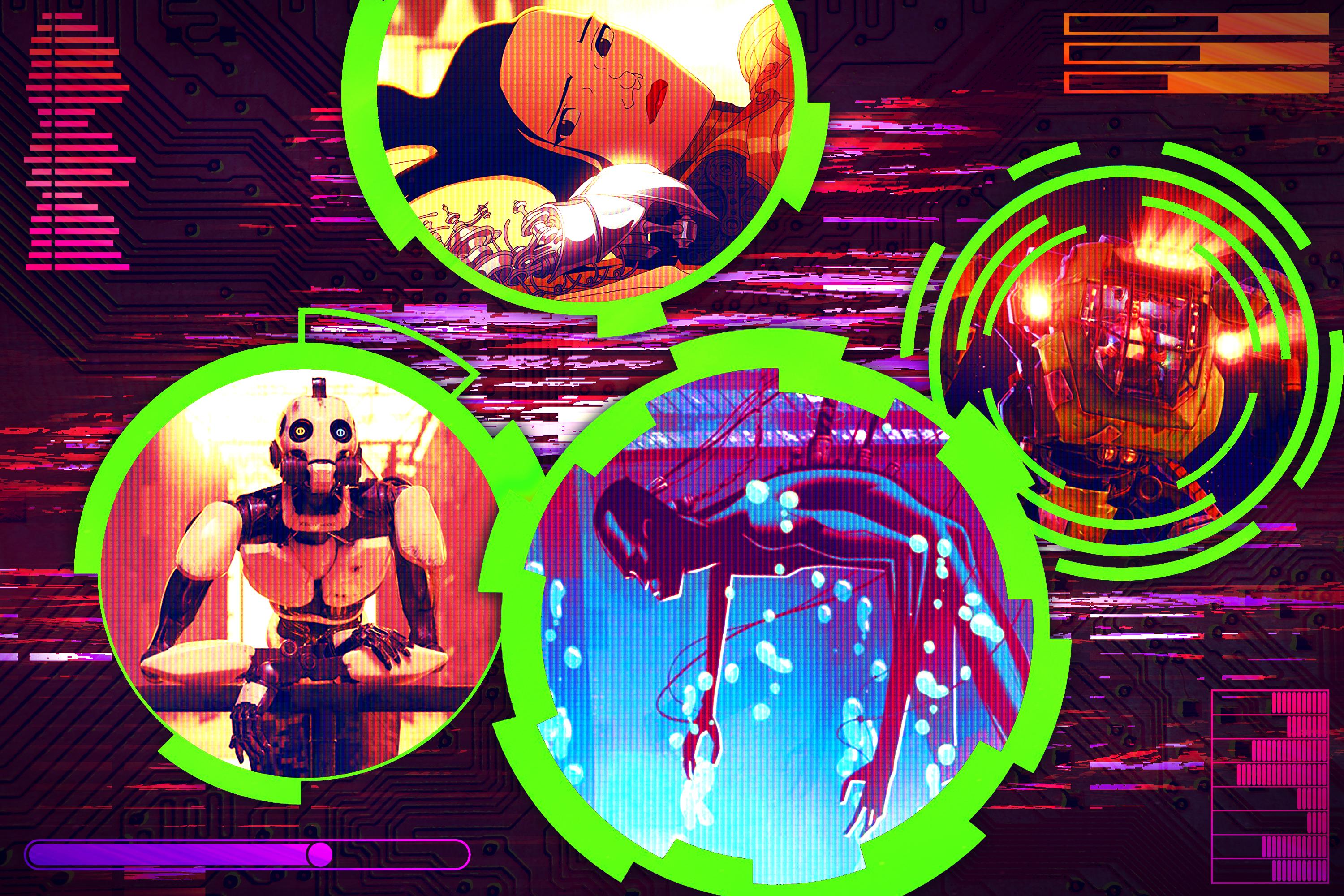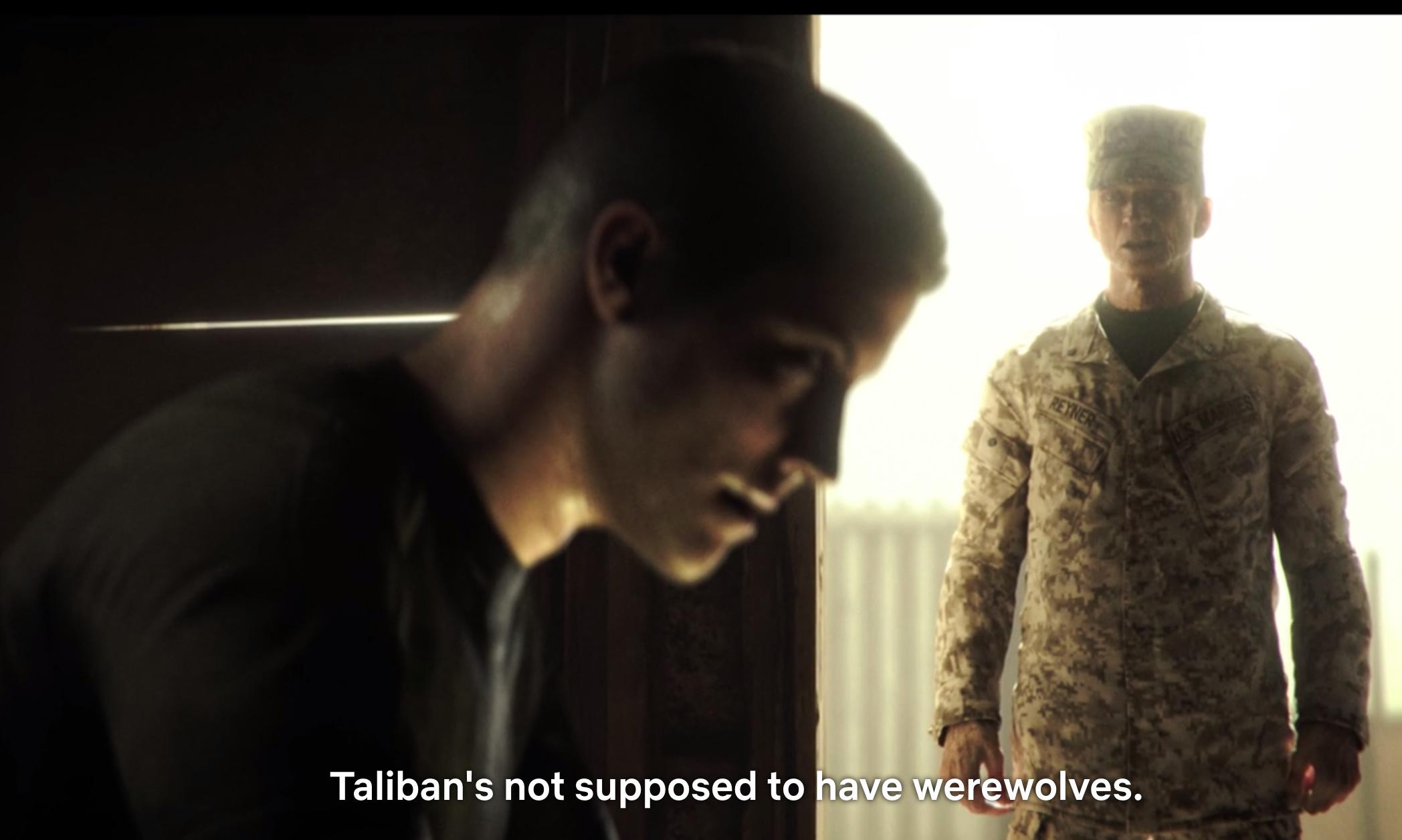
At least Love, Death & Robots executive producers David Fincher and Tim Miller don’t purposefully waste your time. There are 18 episodes of their new adult animation anthology on Netflix, each short story tying itself off at anywhere from six to 17 minutes. The shortest, “When the Yogurt Took Over,” assumes—much like Douglas Adams’s Hitchhiker’s Guide to the Galaxy—that more-evolved, supernaturally capable beings already reside on Earth with us helpless, selfish humans. However, instead of dolphins as our overlords, it’s yogurt that would gladly fix the global economy for us (in exchange for the entire state of Ohio). “When the Yogurt Took Over” is weird and funny and charming, and then sort of dispiriting, like you’d expect from a sci-fi adaptation by the people who made Fight Club and Deadpool.
When an LD&R episode carries a clear premise—e.g., what if three chatty androids explore a postapocalyptic town, in “Three Robots”—the series is at its best. When what you’re watching feels spooled out from a single, harebrained idea that’s powered by a video game engine is when the show is … not so great. I mean, look at this, from the 10th episode, “Shape-Shifters,” which maybe wants to be about othering and military employment discrimination, but ends up skewered on lines like:

You should know that even for a show called Love, Death & Robots, it’s distractingly violent and horny and not a little misogynistic. LD&R enlists 20 different directors—with no women among them—and there’s only one female writer. It shows. We start with a dystopian gladiatorial death match in “Sonnie’s Edge”—which concludes with a gratuitous lesbian sex scene, a vicious skull-smashing, and a double homicide. “Sucker of Souls” reimagines Dracula as a mutant who gets his penis shot off, “The Witness” involves a literal leather club, and “Beyond the Aquila Rift” is just CGI’ed softcore porn. Often, LD&R feels edgy for edgy’s sake, refusing to do anything less than too much because it’s hardcore and for adults.
I mean, even the cats have sex. “Good Hunting” blends Eastern mysticism, automata, and steampunk to tell a tale of revenge in British-occupied Hong Kong. It’s a really good story, but the amount of time the protagonists spend topless or gazing longingly at each other makes the question of whether they will or won’t be fucking as important as whether those evil aristocrats will get what they deserve.
Netflix began this expedition into mature cartoons with Big Mouth, followed by Devilman Crybaby. With LD&R, the streaming giant is opening itself up to bigger and weirder attempts at animated content. The anthology is probably best experienced as a demonstration of what two accomplished directors and a stable of creatives, given a considerable animation budget, can do on autopilot. The brightest indication of the weird future we’re stepping into might be “Zima Blue,” the better story about automata, which contends with simplicity as something magical, and magically simple in its own right. It also serves to make you think about how good LD&R might’ve been if it were more curated and thought out.
Should You Watch It? If you’re jonesing for “Black Mirror but smaller and more berserk,” then absolutely. At the very least, watch “Zima Blue” and “Good Hunting.”
Which Episode(s) Can I Safely Avoid? The aforementioned “Shape-Shifters,” for one; “The Dump” is about a monster that lives in a dump, and that’s the extent of what you need to know; “Blind Spot,” a high-speed heist populated by Mattel toys that can’t have done much for anyone that watched it; and “The Witness,” which is nonsensical, sexist, and kind of just whooshes past you, like a bad, skippable cutscene.
What Is the Show’s Best Subversion? Maybe “Suits,” a Starship Troopers–type action short where farmers fight off invading aliens in mech suits until it’s revealed that the farmers are, in fact, the invaders.